Achieving success in the hyper-casual market is no easy feat, as it involves numerous factors that can be difficult to decipher. One effective approach is to break down existing games into their core components, in order to identify key growth opportunities for your own projects.
In a previous article, publishing lead at Azur Games Sergey Martinkevich looked under the hood of the idle arcade game My Mini Mart. As part of a joint meetup between Azur and Google Ads Sergey also discussed another successful mobile title, Save the Doge.
I'm often presented with game prototypes that reference various popular titles, but upon closer examination, they lack the crucial components that made their predecessors successful. That's why decomposition is so crucial. It may not be the most thrilling task, but it's essential to understanding the key elements that drive game design, mechanics, and monetisation in top games.
In my previous article, I dissected an idler game to illustrate the decomposition process. This time around, I turn my attention to a popular hypercasual game in the trending puzzle genre.
Save the Doge

It's likely that everyone has come across this game. It was released in the middle of 2022 and has already amassed over 80 million downloads, with monthly downloads currently exceeding 7 million. This game has become a phenomenon.
It's built around situations that can be solved through drawing, called Power Level Puzzle, but it's also known as Draw to Mesh. However, the game's core element revolves around observing the behavior of bees after completing a drawing.
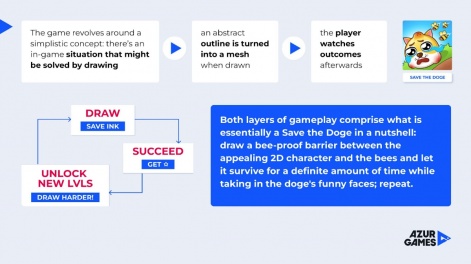
The game starts with a lobby that introduces a short, looping animated sequence with hints on what to do. We see a failed scenario, teaching players what to avoid and what to do right then and there.
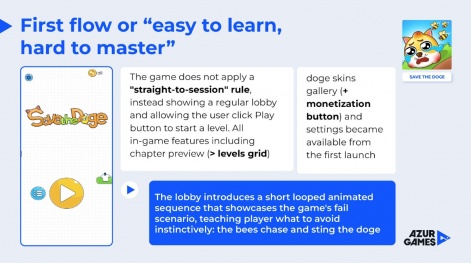
We also have access to the skins gallery available from the first launch. Now let’s look at the actual tutorial.
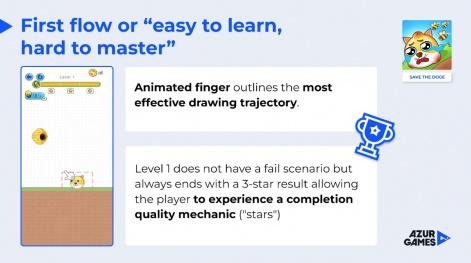
We have animated finger outlines and the most effective drawing trajectory. It will be repeated until you finally draw the ideal trajectory. Level one is impossible to lose, and you always receive three stars. The game starts with a low entry threshold level, which is very important.
After that, you'll see the results screen.
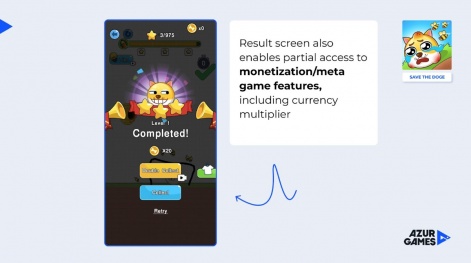
Also, you get the monetisation experience right from the start.
In general, the first three levels are very simple, and you can look at them as a tutorial on how to create a low entry threshold.
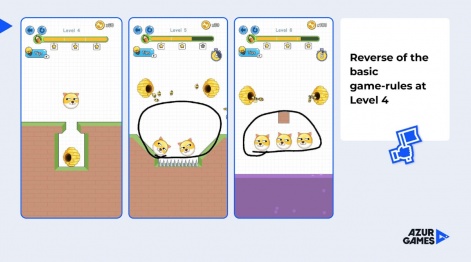
Here’s a particularly interesting level, as it goes against the basic rules of the game. Instead of isolating the dog, you need to isolate the beehive. This highlights the game's variability and depth, which is a credit to the game design. Even if you take the same level and move the dog and hive to a different location, the experience will be different.
At level five, obstacles are introduced, and the gameplay becomes more physics-based as two doggies appear on the screen. You need to protect them from both the hive and the obstacles. The player is provided with a lot of content from the get-go, another point to add to our conversation about diversity. In reality, all levels share the same basic mechanics.
The first eight levels introduce all of the in-game environment mechanics so that the user can fully immerse themselves in the game's basic rules.
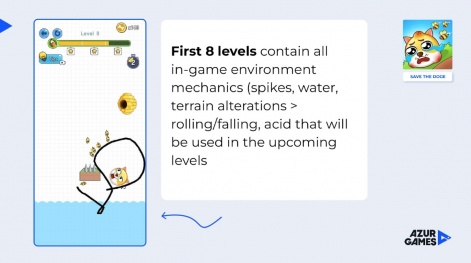
Scalability is key
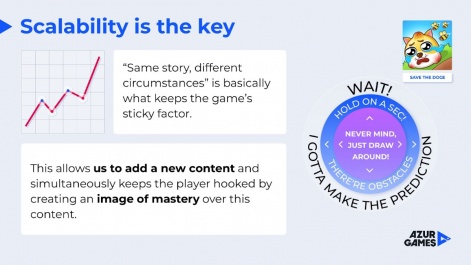
"Same story, different circumstances," that's what makes this game so captivating. The game hasn't changed much since its release, but that's because its scalability is built into the game design. This allows for the addition of new content while still providing players with a sense of mastery within their first gameplay experience.
This is the game’s flow, players make a prediction on how to proceed, experience satisfaction from their ingenuity, then encounter an obstacle and try to overcome it. Even if they fail, the gameplay experience itself is enjoyable. It's not your typical puzzle game.
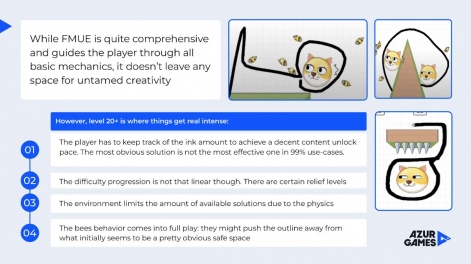
Besides, to get three stars, players must adhere to certain limitations on the length of the lines they draw which adds a challenge for those who want it. And what's even more important is that in later levels, 90% of the most obvious solutions are not the most effective. This is an amazing approach to level design. The game's difficulty progression is not linear, with some levels designed to provide relief and reduce tension — I already talked about the ups and downs in the previous section.
As for monetisation

The monetisation strategy is focused on content that can be accessed using stars. An interesting point to note is that the game doesn’t consider tips as consumables, which means that you can’t collect them during simple levels and use them when the situation becomes difficult. On the other hand, the replays are free because the sessions are short. This is also an important aspect to consider when creating a puzzle game. Although the skins don’t have any role to play, they’re funny.
Furthermore, the game features interstitials before the start of each level.
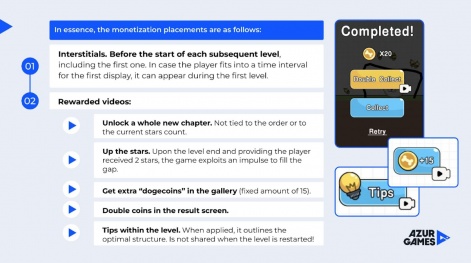
The rewarded videos are pretty simple, they let you increase the number of stars, unlock a completely new chapter and receive additional coins and tips within the level.
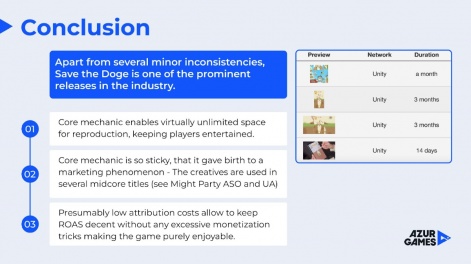
The game is fantastic and its core mechanics provide an incredibly diverse gameplay experience. It’s highly scalable and easy to add new content to. Even major titles continue to use ad creatives inspired by this game in their campaigns.
In terms of competition and opportunities in the hyper-casual industry, the game was launched in the middle of summer and has already given rise to dozens of clones. At present, it has been downloaded over 70 million times. If we take into account all the clones, it could reach up to 70 million more.
With its impressive track record, there's no doubt that this game is a treasure trove of valuable insights for anyone looking to make their mark in the hypercasual space.
Edited by Paige Cook





















